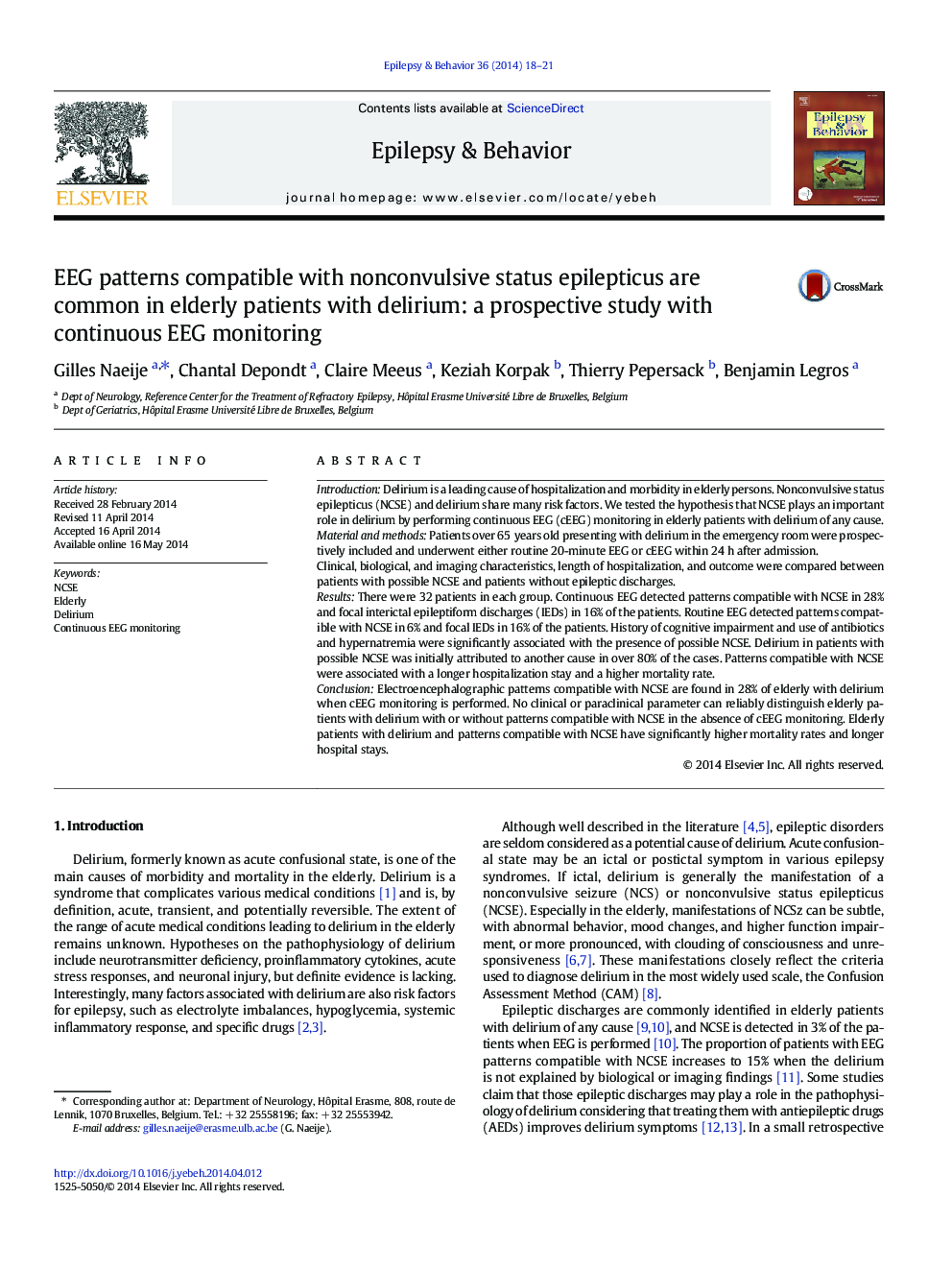| Article ID | Journal | Published Year | Pages | File Type |
|---|---|---|---|---|
| 6012383 | Epilepsy & Behavior | 2014 | 4 Pages |
â¢Delirium is a leading cause of hospitalization and morbidity in elderly.â¢Nonconvulsive status epilepticus (NCSE) and delirium share symptoms and risk factors.â¢Continuous EEG monitoring (cEEG) detects patterns compatible with NCSE in 28% of cases of elderly delirium.â¢No clinical or paraclinical parameter can distinguish elderly patients with delirium with or without patterns compatible with NCSE in the absence of cEEG monitoring.â¢Elderly patients with delirium and patterns compatible with NCSE have significantly higher mortality rates and longer hospital stays.
IntroductionDelirium is a leading cause of hospitalization and morbidity in elderly persons. Nonconvulsive status epilepticus (NCSE) and delirium share many risk factors. We tested the hypothesis that NCSE plays an important role in delirium by performing continuous EEG (cEEG) monitoring in elderly patients with delirium of any cause.Material and methodsPatients over 65Â years old presenting with delirium in the emergency room were prospectively included and underwent either routine 20-minute EEG or cEEG within 24Â h after admission.Clinical, biological, and imaging characteristics, length of hospitalization, and outcome were compared between patients with possible NCSE and patients without epileptic discharges.ResultsThere were 32 patients in each group. Continuous EEG detected patterns compatible with NCSE in 28% and focal interictal epileptiform discharges (IEDs) in 16% of the patients. Routine EEG detected patterns compatible with NCSE in 6% and focal IEDs in 16% of the patients. History of cognitive impairment and use of antibiotics and hypernatremia were significantly associated with the presence of possible NCSE. Delirium in patients with possible NCSE was initially attributed to another cause in over 80% of the cases. Patterns compatible with NCSE were associated with a longer hospitalization stay and a higher mortality rate.ConclusionElectroencephalographic patterns compatible with NCSE are found in 28% of elderly with delirium when cEEG monitoring is performed. No clinical or paraclinical parameter can reliably distinguish elderly patients with delirium with or without patterns compatible with NCSE in the absence of cEEG monitoring. Elderly patients with delirium and patterns compatible with NCSE have significantly higher mortality rates and longer hospital stays.
